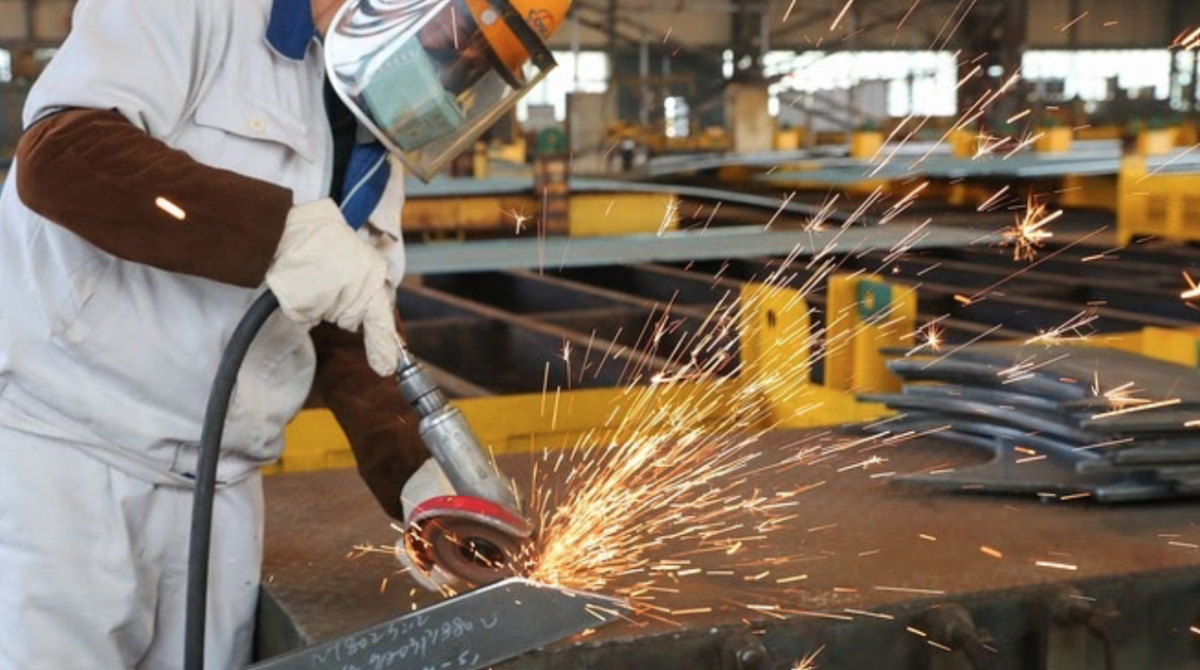
A Chinese employee at a shipyard in Nantong in China’s eastern Jiangsu province after an extended holiday last month. Source: MarketWatch
How is it going at Canadian Alliance right now, in the midst of the COVID-19 crisis?
William McKinnon: There is a lot of activity going on in the food supply chain. As the panic buying increases, the volume of products go up through our facilities. Our volumes are up by about 30% in the last four weeks.
Do you think that it’s just going to be a blip where people will have so much that there will then be a corresponding drop-off?
WM: We sense there is a panic around the prospect of isolation or quarantining. Normal rational thoughts go out the window and regretfully irrational decision making gets replaced with panic. The vast majority of our food chain customers are seeing huge spikes in demand and in turn our team is processing increasing volumes, greater than our Christmas rush.
But how long is it going to last? The short answer is that there is no way to know. We’ve been ramping up over the last couple of weeks and it seems that as the stock market goes down, the hoarding increases. By having what I call the “surge purchasing” by hoarders, it puts a tremendous strain on the supply chain. Hoarding only serves to create an imbalance in the supply chain that prevents us all from receiving goods in a reasonable quantity.
Are Canadians actually in danger of running out of essential goods? Can we separate some facts from fiction here?
WM: What we’re seeing from our food supply chain perspective is our customers are keeping pace to keep their supply chain intact.
We aren’t seeing stockouts, we’re seeing incredible increases in volume. Our systems are built for reasonable volume flexes, but when you get surges greater than 30%, it’s a challenge for any organization to keep pace. As a result, overtime you end up with stock outs or disruptions in supply.
So what are you able to do?
WM: What happens in situations like these is that it ends up with the team putting extra hours. There isn’t a pool of trained workers out there that are ready to spring into action. We have a little bit of wiggle room, but we don’t have a 30% increase of available staff ready to mobilize to walk into our building tomorrow. Nobody does.
Looking in the other direction of the supply chain, how much are we going to be seeing shortages due to products not being able to get here in the first place?
WM: We feel shortages will only occur if government authorities restrict the movement of goods across national borders. Based upon Canada’s decision yesterday to support the flow of goods across the border we should be in good shape.
Do you have any specific examples of supply chain complications that you’ve been seeing so far?
WM: One of my customers said there were some delays in early February, primarily out of China, but that seems to be back on track. It’s been reported that the Chinese are back in their factories for the most part, or at least it’s improving. But we did see some evidence of that with customers who had goods delay coming out of China for a period of around three weeks. That seems to be dying down now.
Most of our product is from the food chain, so I don’t know too much about the electronics sector or other no-food consumer goods — but from our perspective, We have a couple of appliance manufacturers that are sourcing out of Asia. They had a little bit of a delay, but now they seem to be going full steam ahead. You know what’s interesting is they’re selling a lot of small freezers, and they’re going like hotcakes. There’s a huge surge right now and everybody’s buying another small freezer for their garage so that they can hoard more frozen food.
Do logistics professionals plan for scenarios like these ones?
WM: Our planning is more around what we call seasonal increases. We have typically strong activity in November and early December as a result of the winter holidays… and we have a sense of what that looks like by looking back at our history. And typically for us, that’s a 15% increase in business. You know what’s coming in over time, and if it will last. You can look at the calendar and, depending on when Christmas day falls, you can predict when it’s going to decline
But in this particular case, no one has gone through this before, and there aren’t preparations that are necessarily implemented. I could only imagine what it’s like for those that are in the health medical field. Some of our clients that provide sanitation products – their supplies are moving out a historical volume increases.
With the way the government is managing closures and the supply chains, and with supply chain professionals themselves working around these sorts of problems – with your everyday experience, do you think the population is in good hands in this scenario?
WM: From what I’ve seen and heard so far, I think that in Canada, our governments are behaving really responsibly when it comes to preserving our supply chain from a domestic and international perspective. They seem to recognize that it’s important for people to get essential goods. And that includes food and medical supplies, anything related.
Thanks for your time, William. We’ll be doing another update next week as this situation rapidly evolves.
